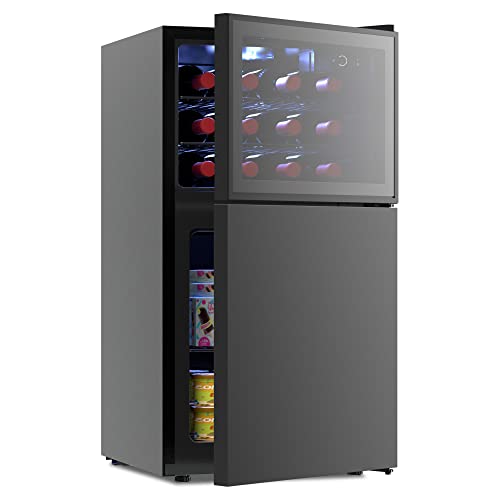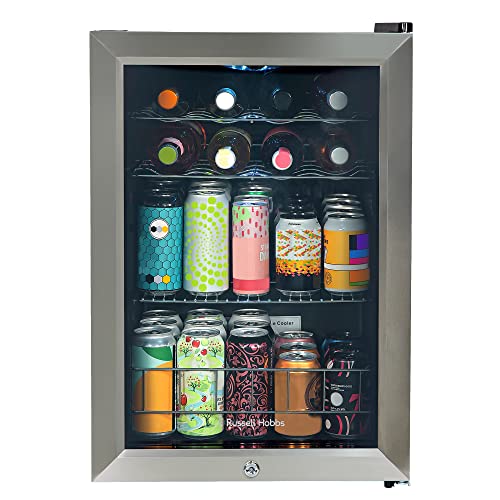What Is The Secret Life Of Wine Refrigerator Built In
페이지 정보
작성자 Sybil 작성일 24-09-01 11:38 조회 6 댓글 0본문
 Energy Efficient Wine Storage With a Wine Refrigerator Built in
Energy Efficient Wine Storage With a Wine Refrigerator Built inThis energy-efficient built-in wine refrigerator allows you to store and serve your wine fridge small at a perfect temperature. You can store red and white wine in separate temperature zones to preserve their full flavour.
 These units are designed to blend seamlessly into your cabinetry. They can be placed under countertops to allow an easy access to a refreshing Riesling glass after dinner. However, they require proper ventilation and adequate clearance to let heat escape properly.
These units are designed to blend seamlessly into your cabinetry. They can be placed under countertops to allow an easy access to a refreshing Riesling glass after dinner. However, they require proper ventilation and adequate clearance to let heat escape properly.Size and Capacity
Built-in wine fridges are a stylish and sleek alternative to freestanding, bulky units. With front vents and a recessed design, these wine coolers can be recessed into cabinets or under the cabinet wine fridge counters to create a seamless appearance. They also allow for an easier storage solution, allowing you to easily change from cold to wine drinks.
With capacities of up to 368 bottles These wine refrigerators are made for serious collectors with large collections. They are designed to safeguard your wine for a long time by ensuring they have ample storage space as well as precise climate control. These units are great for garages, basements, or other areas that aren't conditioned and where a more rugged storage environment is required.
The capacity to cool wine fridges is usually measured in terms of the number of standard Bordeaux-style bottles it can hold. However, you must consider whether your collection of wines includes different sizes of bottles, such as Burgundy or Champagne. This will affect your capacity requirements, as these bottles require more space than a Bordeaux standard bottle. Some wine refrigerators have shelves that can be adjusted to allow to store different sizes of bottles.
In addition to the size of your wine fridge, you'll have to think about where to place it. If you intend to put it in the cabinetry you already have, you'll require 6 inches clearance in the rear as well as on both the right and the left side. This allows the heat generated by the wine refrigerator to escape and avoid overheating.
You should think about adding one of these high end wine fridges in your kitchen if you're looking to splash out on a premium model that has an exquisite stainless-looking finish. These models will bring a touch of elegance to your home with their sleek and elegant door designs. These units come in larger sizes, which are ideal for those who like to entertain and host large gatherings. These wine refrigerators come with many features like dual-zone cooling UV protection and a host of other options.
Ventilation
If the wine refrigerator isn't properly ventilated, hot air will accumulate inside and the refrigerator could overheat. Ventilation is crucial because it allows the cooler to maintain a consistent temperature and humidity, while also ensuring against fluctuations in temperature that could damage the wine bottles or alter the taste of the wine. Examine your wine refrigerator after it has been in operation for a few minutes to ensure that it has the right ventilation system. If the fridge is cool to the feel, then it has proper ventilation.
Most wine fridges come with an internal temperature sensor that checks the temperature within the cooler and alerts you if it is out of the range. Some models have dual temperature-controlled zones to allow you to store different types of wines at ideal serving temperatures.
The ideal temperature for wine storage is between 55 and 66 degrees Fahrenheit. This is to avoid the development of cork rot or other issues that can damage your precious collection. Some models even include the ability to illuminate when the temperature inside is lower than your preferred setting.
A built-in wine refrigerator may be the ideal option for your collection, based on the storage needs you have. They can be installed under counters in the bar or kitchen to make it easy for guests to access. Some models offer front ventilation which allows them to be placed in a flush position with your cabinetry to create a sleek appearance.
To install a wine refrigerator, you need to measure the space and account for the cabinet's width. The fridge should be at least a few inches away from the wall on all sides to permit adequate ventilation. If a wine refrigerator is pushed against a wall or cabinet, it can clog the vents and prevent heat from escaping. Freestanding wine refrigerators have vents on the side or back to effectively disperse heat.
Installation
A wine refrigerator built in can make a chic, functional bar to your home. But, there are a few things to be aware of when choosing the best spot for your new appliance.
First of all, make sure that your new cooler has adequate space for ventilation. If a wine refrigerator is not properly vented it will get hot and then reduce its life span.
Additionally, you should keep your wine and beverage fridge fridge out of direct sunlight or other sources of heat. This will shield your collection from harmful ultraviolet rays of the sun and allow it to cool quickly.
Last but not least, make sure that your wine fridge for kitchen refrigerator is not in close proximity to another heat-producing appliance such as dishwashers. This could cause your wine to be damaged or experience unpredictable temperature fluctuations.
Wine refrigerators are available in two forms: freestanding and built-in. While freestanding wine refrigerators are more flexible in terms of installation options, built-in units offer a seamless integration into kitchen cabinetry. Both are available in various sizes and styles, meaning you can find the perfect design for your home.
You should measure the area in which you plan to put your new wine refrigerator to make sure that it can ventilate properly. If possible, try to leave just a few inches around the unit to allow for ventilation. Make sure that the door can be fully opened as well. If it's not, the racks inside are difficult to reach.
Certain models also have distinct temperature preferences. For instance, some wine refrigerators are able to keep red wines at an optimal serving temperature of 55 degrees Fahrenheit, while others might be suitable for long-term storage. It is possible to invest in a dual zone wine fridge freestanding refrigerator depending on your needs. This will allow you to keep wines that are stored for a long time chilled and serve chilled drinks in another area.
Read the instructions carefully if you are planning to install a wine cooler that is built-in to ensure that your new cooler is correctly installed. Once it's been moved in it, you must wait for a few hours before turning it on to ensure that the coolant can settle.
Energy Efficiency
In this era of expensive energy, it's essential to consider the electricity consumption of any appliance. When purchasing a built-in wine fridge, look for models with an energy efficiency rating, or Energy Star certification. This indicates that the wine refrigerator is constructed with the most advanced cooling technology and insulation to help conserve energy.
A wine refrigerator must cool the entire interior as well as the bottles that are kept inside. A larger wine fridge with a larger capacity for bottles will use more energy than a smaller model. Also, the temperature of the room could impact the fridge's power consumption because it is working harder to keep a cooler interior.
To decrease the amount of energy consumed by your wine fridge, ensure that it is always full of wine. It might seem counterintuitive, but a wine refrigerator that is filled with cold, sealed bottles won't have to work as much to keep its temperature. Maintaining your shelves and bottles in the right order can also make your wine refrigerator run more efficiently. If you place your bottles horizontally, they'll chill quicker than if you put them on their sides.
Another way to cut down on your wine fridge's energy usage is to choose a new model that features advanced cooling technology. The most recent models are generally more efficient than older wine fridges, and can save you as much as PS100 per year in energy costs.
Choose a wine refrigerator that has a low-energy cooling compressor system when shopping. This type of fridge is more environmentally friendly and consumes less energy than those that have a high-energy compressor system. Also, consider the thermoelectric wine fridge. These wine coolers cool the inside using the Peltier-effect, which consumes much less energy than compressor-powered units. However, they are more sensitive to ambient temperatures and require a little more maintenance. Look for a brand with an established reputation for making top rated wine Refrigerators; https://apk.tw/space-uid-6531753.html,-quality, reliable wine refrigerators. They are likely to make a refrigerator with an energy-efficient cooling system and a quiet operation.
- 이전글 Why Double Buggy Isn't A Topic That People Are Interested In.
- 다음글 Fruit Slot Games - Feel The Rush Of Adrenaline On Your Body
댓글목록 0
등록된 댓글이 없습니다.